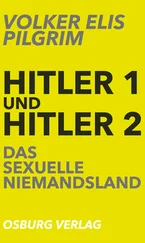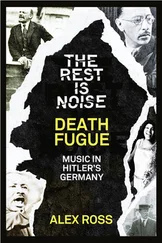But the Communist opponent, like other opponents, failed to materialize. Rosa Luxemburg’s famous question of 1918, “Where is the German proletariat?” once again went unanswered. Seemingly unimpressed by either the persecution and flight of its leading members or the mass desertions among the rank and file, which began immediately upon Hitler’s appointment as chancellor, the Communist Party persisted in its dogmatic belief that its most dangerous enemy was the Social Democrats. Fascism and parliamentary democracy were viewed as the same at bottom, and Hitler only a puppet of powerful interests. A resolution passed by the executive committee of the Comintern on April 1, 1933, insisted in rigid, ideological fashion that Hitler would sooner or later open the gates to the dictatorship of the Communist Party. “We’re next,” was the steadfast Communist refrain of those weeks, as well as “ Hitler regiert - aber der Kommunismus marshiert!” (“Hitler rules but Communism is on the march!”) The party still had not come to its senses by the summer of 1933, when it announced that it’s main task was to “train our fire more heavily than ever” on the Social Democrats. 20
The Communists paid dearly for their blindness. The party evaporated without any sign of defiance, act of resistance, or even parting message to its militants. Its officials were arrested and its subsidiary organizations crushed. Those members who escaped became fugitives. Some look to plotting in nameless conspiracies that were usually quite local in nature. It is true that many Communists sacrificed their lives resisting the Nazis long before military, church, or conservative circles got into the act. But the Communist Party itself was responsible for the isolation in which its members found themselves and from which they never escaped; it was responsible as well as for the impotence of their “silent revolt,” which has faded, therefore, from memory. 21Over the years, Communist resistance cells occasionally approached other resistance groups, Social Democrats in particular, with offers to join forces, but the distrust sown between 1930 and 1934 never dissipated and these feelers were generally ignored. When one such offer was actually listened to and considered, it resulted in one of the most devastating setbacks in the history of the German resistance, as we shall see.
The crushing of left-wing parties and the trade unions left the working class without an organizational framework. Individuals who resolved to continue the struggle found themselves alone or in league with just a few close friends. Many working-class leaders were imprisoned. Others withdrew into their private lives and a few went underground. But most left Germany to live in exile, continuing to send messages home, encouraging and advising those who remained behind. It soon became clear, however, that very few of the former rank and file were still listening. The sharp decline in unemployment, the improving economy, and the social programs of the new regime had produced a sense of general well-being, even pride, among the working class. Memories of their socialist days, especially given the disappointments toward the end, faded fast. The enormous self-confidence of the Nazis in their handling of labor is suggested by the release from concentration camps in 1937 and 1938 of three once popular labor leaders-Julius Leber, Carlo Mierendorff, and the last acting chairman of the General German Trade Union Federation, Wilhelm Leuschner.
Not only did the Social Democrats, Communists, and German Nationals accept their fate quietly, so did all other political parties, leagues, professional organizations, and civic associations, though they often had long, proud histories. The Protestant Church alone successfully resisted Nazi co-optation, albeit at the price of constant disputes and schisms. It succeeded because the regime made the mistake of openly attacking it too soon, having assumed that it would fall easily into line because so many of its pastors leaned toward the German Nationals. The church rallied its forces and asserted its independence at a synod held in Barmen in May 1934. Barely two years later, however, Protestant unity broke down; the majority formed a purely religious wing and, motivated by the Lutheran tradition of deference to authority, sought an arrangement with the state, while the remainder continued the struggle, emphasizing their rejection of the totalitarian and neo-pagan proclivities of the regime. The central figure in this minority wing was Pastor Martin Niemöller, who had been a submarine captain in the First World War. Niemöller was arrested on July 1, 1937, and sentenced, after a show trial, to seven months’ imprisonment. At Hitler’s express orders, he was then rear-rested and incarcerated as a “personal prisoner of the Führer” in the Sachsenhausen concentration camp, where he remained until April 1945.
Relations between the Nazi regime and the Catholic Church developed in virtually reverse order. At first the church was quite hostile and its bishops energetically denounced the “false doctrines” of the Nazis. Its opposition weakened considerably, however, when, at Papen’s initiative, the Nazis undertook negotiations with the Vatican and successfully concluded a concordat on July 20, 1933. In the following years, the chairman of the Conference of Bishops, Cardinal Bertram of Breslau, developed an ineffectual protest system that satisfied the demands of the other bishops without annoying the regime. 22Only gradually did the Catholic Church find its way back to a firmer brand of resistance in the efforts of individual clerics such as (Cardinal Preysing of Berlin, Bishop Galen of Münster, and Bishop Gröber of Freiburg, although even their work was attenuated by internal disputes and tactical disagreements. The regime retaliated with occasional arrests, the withdrawal of teaching privileges, and the seizure of church publishing houses and printing facilities.
Resistance within both churches therefore remained largely a matter of individual conscience. In general they attempted merely to assert their own rights and only rarely issued pastoral letters or declarations indicating any fundamental objection to Nazi ideology. More than any other institutions, however, the churches provided a forum in which individuals could distance themselves from the regime. Because the Nazi policy of Gleichschaltung, or conformity to the party line and codes of behavior, encountered such forceful opposition from the churches, Hitler decided to postpone a showdown until after the war.
The various militant wings of the old parties, the independent youth organizations, and universities fared no better than the official political groups: they, too, were dissolved or co-opted without much sign of resistance. Any remaining assertions of autonomy were soon muted by countless qualms, attempts to appease the new ruling party, and timidity masquerading as respect for the law. The heavy-handed metaphors that the Nazis so loved-the images Goebbels concocted of storms sweeping Germany, of emptying hourglasses, of faces rising to meet the dawn-may not have been aesthetic triumphs but they hit their mark precisely. In just a few feverish weeks a highly heterogeneous society with innumerable centers of power and influence, independent institutions, and autonomous bodies was reduced to “mere, uniform, obedient ashes.” 23The Gleichschaltung process was completed on July 14, 1933, with a burst of new laws, the most important of which declared the National Socialist German Workers’ Party-the Nazis-to be the only legal political party.
* * *
There was that day no sense of break or rupture; it simply marked the legal end of the Weimar Republic. Feelings of regret were few. People felt, often for very different reasons, that the republic had meant nothing or very little to them. There was even a sense of relief that it was finally all over. The republic, basic civil rights, the multiparty system, and democratic restraints on the exercise of political power were all firmly relegated to the past. Barely five months after Hitler’s appointment as chancellor, those days seemed very remote indeed. Robert Musil wrote at the time that he felt that “the things that were abolished did not really matter very much to people anymore.” 24The future did not lie there, whatever direction it might take. Perhaps the future did indeed lie with Hitler’s new order, which as it expanded and gained converts suddenly seemed to have some rational arguments on its side as well.
Читать дальше
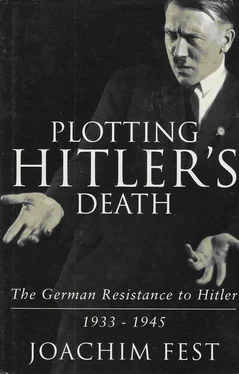

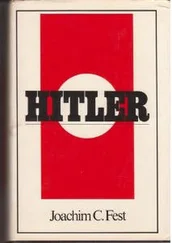
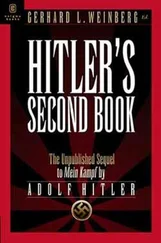
![Traudl Junge - Hitler's Last Secretary - A Firsthand Account of Life with Hitler [aka Until the Final Hour]](/books/416681/traudl-junge-hitler-s-last-secretary-a-firsthand-thumb.webp)

